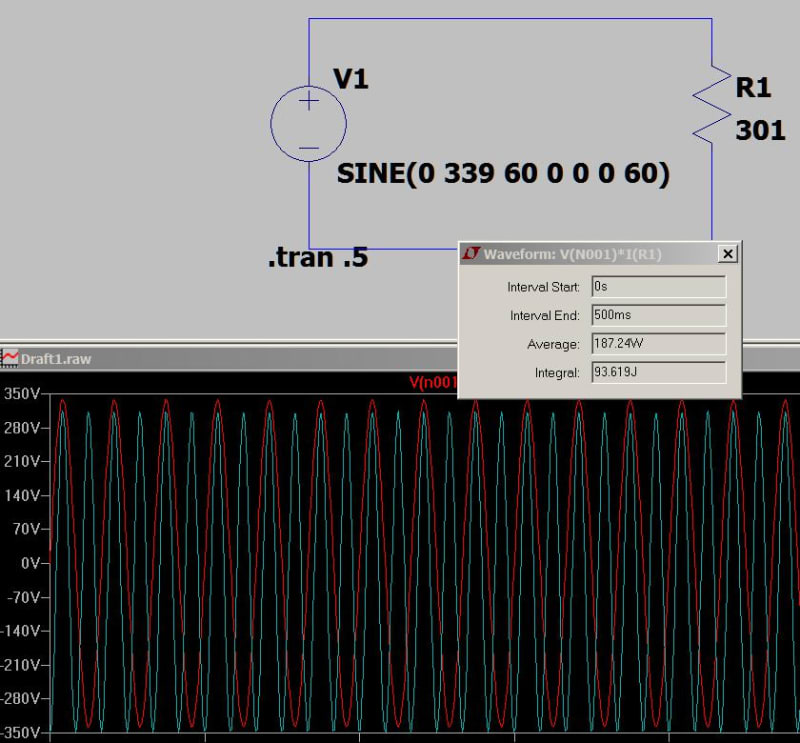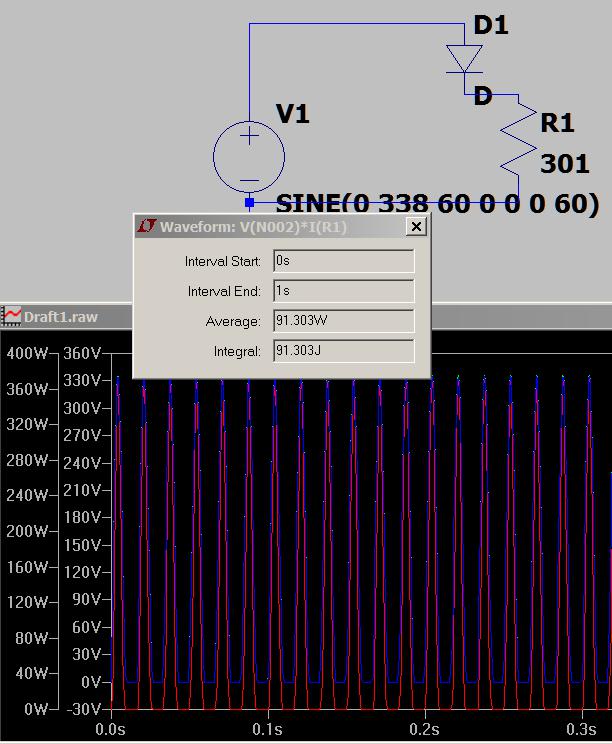gurse
Electrical
- Jun 27, 2019
- 17
I have a 7.5 kW motor with 110V, 40W anti condensation heater. But i have only 240 V supply for the heater, can I put a resistor in series with the heater to reduce the voltage please.
Follow along with the video below to see how to install our site as a web app on your home screen.
Note: This feature may not be available in some browsers.
Half-wave rectification produces even harmonics that have a dc component that saturates transformers. These are to be avoided.


the dc / average is irrelevant to power computations.Using a single rectifier did reduce the output DC voltage to about 45% of AC input,
power computed by multiplying average / dc current times average / dc voltage would be meaninglessalong with the power
